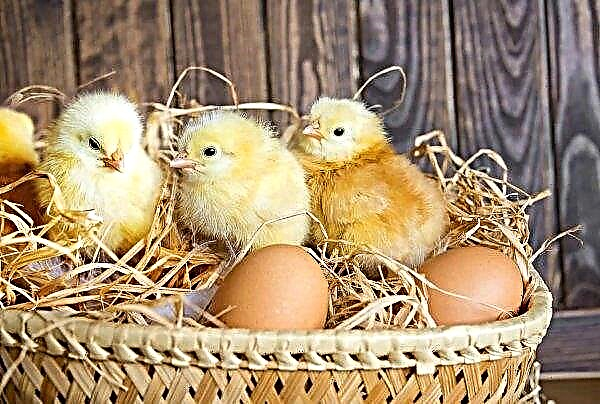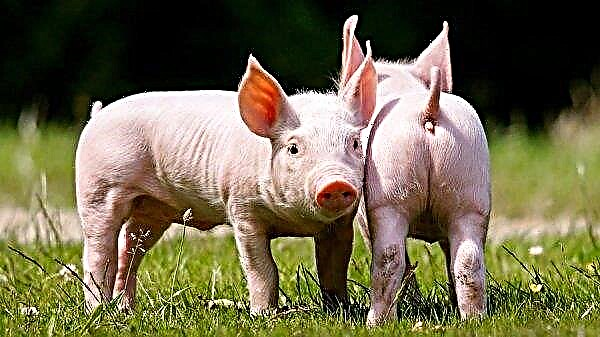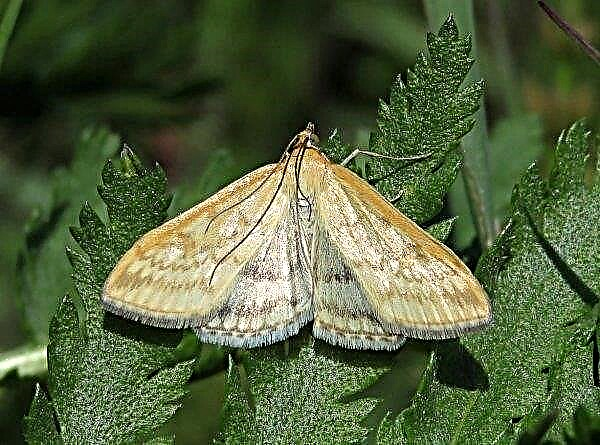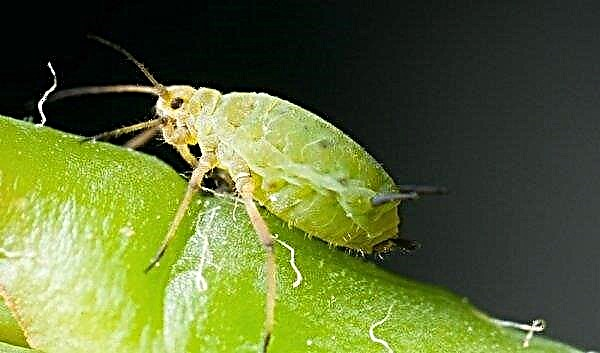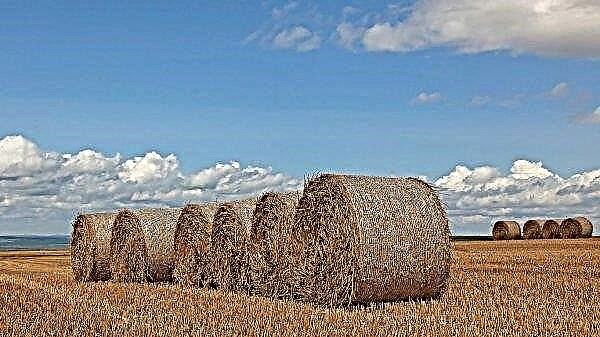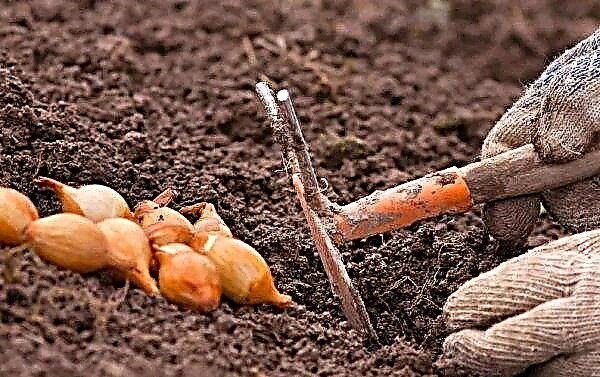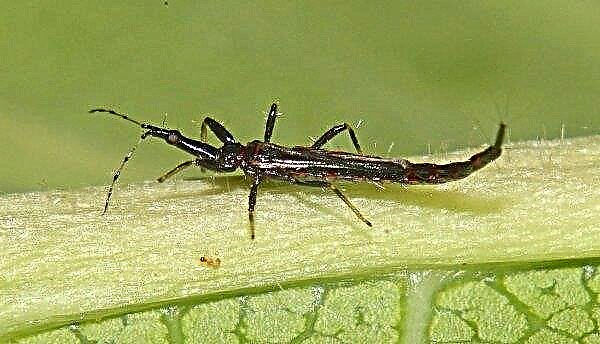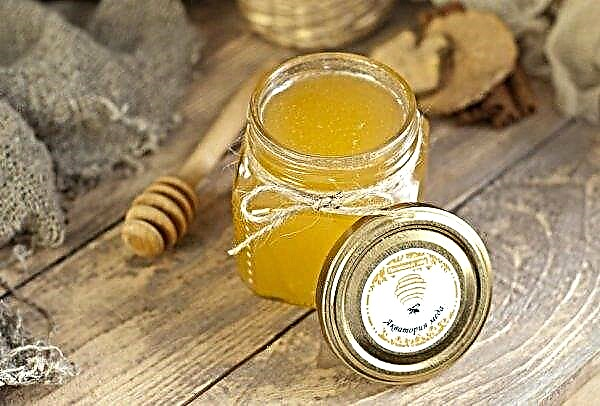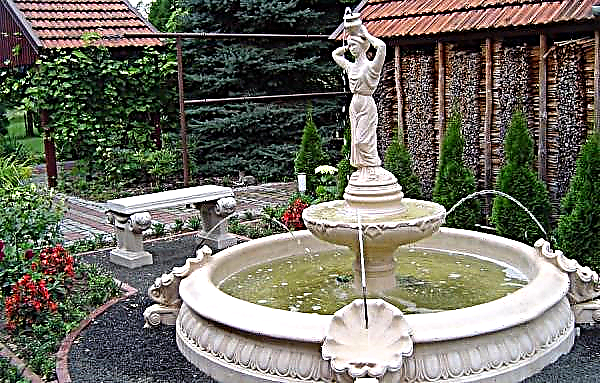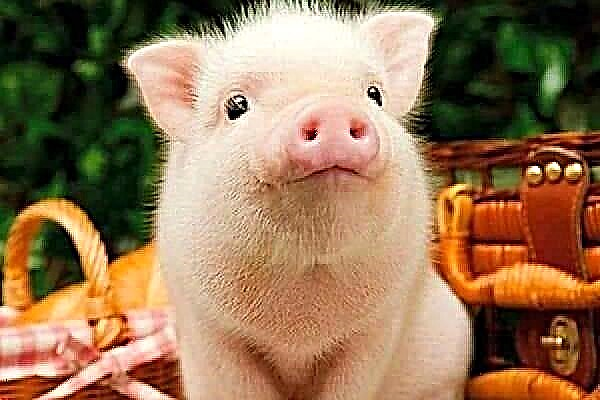The maintenance of domestic chickens and the proper care of them in the warm and cold season has certain differences. It is important to provide birds with such conditions under which they will feel comfortable even in winter.
Features of keeping chickens in winter at home
Proper maintenance of chickens in winter will not only help them maintain their health, but will also contribute to high productivity. Consider the main features of the winter content of laying hens.
Room preparation
To protect the inhabitants of the house from cold winter winds and the effects of low temperatures, the room must be prepared in advance for winter. It is necessary to do the insulation of the walls, floor and windows of the chicken coop, as well as equip the ventilation system and take care of the lighting.
Did you know? Hens and roosters are able to communicate with each other using various types of crowing and clucking.
Warming Methods
Under prolonged exposure to low temperatures, chickens can catch a cold, so preparation for wintering should begin with warming the walls, roof and floor of the chicken coop. Let us consider in more detail the ways of warming the house for the winter:
- Floor insulation. It is carried out using a thick litter of peat, straw, wood shavings or sawdust. You need to choose a quality material for the litter and, in case of caking, periodically add new portions of insulation. The thickness of the litter for the winter in the chicken coop should be at least 20 cm.

- Wall insulation. It is carried out with the help of polystyrene, wood sawdust or natural materials (dry leaves, shingles, pine needles). The inner surface of the walls of the house is first sheathed with a vapor barrier film on which a layer of insulation is attached. A good option for warming the chicken coop is also a mixture of wet clay and sawdust, which covers the interior of the walls of the room. For the beauty and durability of the insulation, you can sheathe the walls of the chicken coop with a lining or other finishing material.

- Insulation of windows and doors. Most of the heat comes out of the chicken coop through windows or doors. To warm the windows using double removable frames, which are put on for the winter. You can seal windows from the outside using a layer of transparent film. The door of the house is covered with a layer of film and felt on the outside, and with a dense fabric inside.

- Insulation of the ceiling. For high-quality insulation of the chicken coop ceiling, a vapor barrier film, polystyrene foam, mineral wool are most often used. The mechanism of roof insulation is similar to wall insulation. After laying the insulation layer, the ceiling of the house can be lined with clapboard.

Important! In winter, it is recommended to maintain a temperature of +7 ... + 12 degrees Celsius in the chicken coop.
Ventilation options
In winter, laying hens are most of the time in the house, so it is important to ensure good ventilation of the room. This will avoid excess dampness and unpleasant odors, as well as maintain the desired air temperature. The most popular chicken house ventilation options in winter are described below:
- Natural ventilation. The simplest but most effective. At the same time, under the ceiling of the house, a regular window is installed. Fresh air enters the room through the door, and moist and musty goes out through the window. It is necessary to choose a place for such a window so that it does not become a source of drafts.
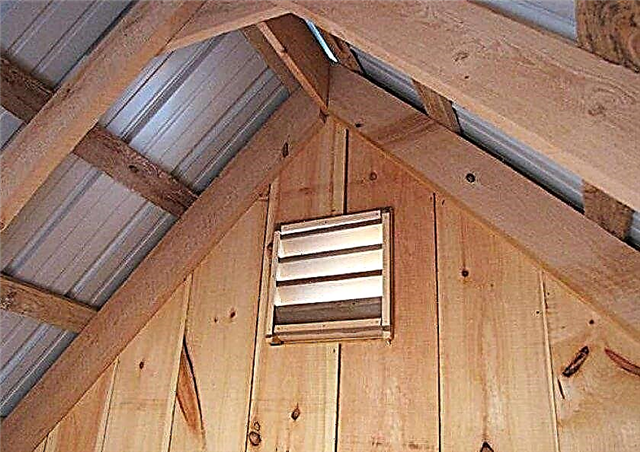
- Ceiling and exhaust ventilation (using pipes). It will help to remove humidity in the room and maintain the desired temperature. Two round holes of suitable diameter are made in the roof of the chicken coop, into which metal pipes are inserted. One pipe is placed a short distance from the floor, and the second on the roof of the house. Fresh air enters the room through one pipe, and the exhaust leaves through another pipe into the street.
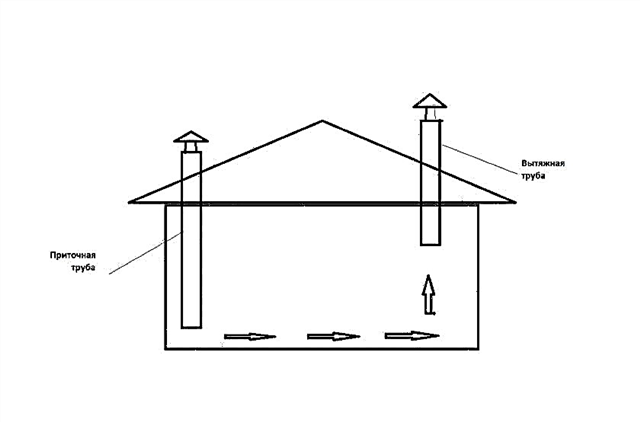
- Electric ventilation. The most expensive, usually used in large houses. An industrial fan, powered by electricity, is built into the wall of the chicken coop. A pipe is connected to it, leaving one end to the street. Air circulation is carried out when the fan is turned on.
Did you know? Domestic chickens can not only experience joy, sadness or excitement, but also feel each other's mood.
Lighting
In winter, egg laying rates of chickens deteriorate due to reduced daylight hours. In order to continue to receive eggs from them, you need to take care of lighting the house. To do this, you can use various types of lamps: LED, fluorescent or conventional incandescent lamps. They need to be installed under the ceiling.
You should not use high power lamps, because chickens do not like too bright light. Lighting near bird nests should be less bright than near feeders and drinkers. Turn on the lamps in the morning from 6:00 until sunrise, and then in the evening - as soon as it starts to get dark on the street. You can turn off the lighting in the house at 20:00.
How and what to feed chickens in winter
The key to high productivity of chickens in the winter is proper feeding. In this case, it is important to adhere to a certain regime and carefully monitor the reaction of birds to any changes in the diet.
The main rule for chickens to survive the cold season is to provide them with enough energy, so the birds should be plentiful in winter and contain a lot of protein.
The feathered winter diet should contain the following components:
- cereals, which are recommended to be pre-steamed, so that they are better absorbed by the body;
- slices of fresh vegetables (carrots, pumpkin, cabbage, beets);
- boiled potatoes for energy;
- compound feed with a high content of vegetable fats, phosphorus and vitamins;
- coniferous and grassy flour;
- a solution of vitamins A, E and D to strengthen bones and increase immunity;
- fish fat;
- salt to improve appetite, it is added to bird feed;
- yeast for better weight gain and better egg production;
- shell rock and chalk to provide calcium.
 In winter, wet blenders made of several components are also prepared for birds. To prevent the mishmash from freezing and being warm, you need to cook it just before feeding.
In winter, wet blenders made of several components are also prepared for birds. To prevent the mishmash from freezing and being warm, you need to cook it just before feeding.In the cold season, hens cannot graze in the fresh air, eating fresh grass, worms and beetle larvae. To compensate for the lack of summer grazing, in winter you need to add one additional feeding to them.
Important! In winter, chickens need to be given germinated grain, which has a high energy value.
Domestic chickens are not picky about food, but they should not be given certain types of foods. Prohibited feeds for birds include:
- bakery products - poorly absorbed by the body of chickens, can cause digestive upset. It is allowed to add crackers to the diet of birds, but not more than twice a week;
- any sausages - contain a lot of fat and preservatives, spices and harmful additives. May cause a stroke or heart attack in birds;
- milk and milk porridge - cause dysbiosis;
- spicy meat soups - contain too much fat and seasoning;
- hard and processed cheeses - contain preservatives and too much salt;
- jam, sweets and compote - contain a lot of sugar, which is poorly processed by the body of chickens and can cause the development of pathogenic diseases;
- sunflower oil - too fat and not processed by the body of birds.
It is equally important to know how to water the birds in the winter. Drinks for chickens in the winter should always be warm. For the preparation of the stirrer, only pure warm water is also used.
How to keep a chicken coop clean in winter
Chickens can often get sick if the chicken coop is dirty. But in the cold season it is more difficult to monitor the cleanliness of the house than in the summer. In winter, all bird feeders and drinking bowls must be thoroughly washed with disinfectants to prevent the growth of harmful bacteria. The remains of the feed must be removed so as not to attract rodents into the chicken coop. Rats and mice can be a source of dangerous diseases for birds.
The remains of the feed must be removed so as not to attract rodents into the chicken coop. Rats and mice can be a source of dangerous diseases for birds.
Walking organization
Despite the cold, chickens need fresh air, sunlight and physical activity. Therefore, the answer to the question of whether it is possible for birds to walk on the street in winter is unequivocal - hens must be let out onto the street.
Did you know? Hens are able to distinguish between some geometric shapes and have the ability to count arithmetically.
For winter walking use a enclosed enclosure near the chicken coop. At the bottom of the enclosure, you need to put a layer of straw or any other litter so that paws do not freeze at the chickens. In the area for walking you also need to put a container with sand or ash.
When the layers enter the house, the ash must be covered so that it does not become damp. The walking time of chickens depends on the air temperature. In severe frosts, birds are released into the aviary for 10 minutes. If the weather is sunny and not too cold, then birds can be kept on a walk longer, but no more than two hours.
What to do if there is no warm room
Chickens belong to picky birds. They do not need special comfortable conditions to successfully winter. Therefore, if there is no special equipped chicken house for chickens, then you can organize their wintering in any available room. You only need to pre-prepare it.
Wintering in a polycarbonate greenhouse
Greenhouses are not used in the winter, so they can also be adapted for keeping chickens. This option of wintering birds is becoming increasingly popular. To equip a polycarbonate greenhouse for winter keeping of birds in it, you need to perform the following actions:
- clean the ground in the greenhouse from weeds and level it;
- make a dense bed of straw or sawdust;
- close all cracks to prevent drafts;
- equip a ventilation system;
- provide heating in the greenhouse (using heaters);
- install lamps for adequate lighting;
- put nests, drinking bowls and feeders.
Important! A greenhouse designed for wintering chickens can be covered from the sides with snow - this will help to maintain comfortable heat inside.
Wintering in the garage
The garage is often used by poultry farmers to keep chickens in the winter. But since this room was not originally intended for birds, before the onset of winter, it is necessary to carry out its preparation:
- to cover the concrete floor of the garage with wooden boards and cover them with a thick layer of litter;
- establish perches, nests, drinking bowls and feeders;
- equip a ventilation system;
- hang lamps to illuminate the garage in the dark.
 Equipping a garage for wintering chickens is simple and inexpensive. When performing these steps, this room is well suited to contain birds in winter.
Equipping a garage for wintering chickens is simple and inexpensive. When performing these steps, this room is well suited to contain birds in winter.Factors Affecting Chicken Egg Production in Winter
In the cold season, it is more difficult for the poultry breeder to create comfortable conditions for chickens in which birds will well lay eggs. But even in winter, you can achieve high rates of egg production, if you provide the chickens with proper nutrition and care. Here are the main factors that reduce the egg production of chickens in winter:
- Incorrect feeding. In winter, birds need to be given more food with a high content of vitamins and minerals.
- Reduced daylight hours. Chickens are highly dependent on solar activity, so this factor is one of the main reasons for the decrease in egg production.
- Cold drinking water. The body of birds does not absorb water at low temperatures.
- Wrong microclimate in the house. Too low air temperature in the chicken coop or its sudden changes reduce the productivity of birds.
- Lack of fresh air and physical activity. In winter, hens spend most of the day in the walls of the house.
- Seasonal molt. It is an integral part of the life cycle of birds and is accompanied by a deficiency of minerals in the body.
Did you know? For laying eggs, hens like to gather in groups of 2-3 individuals.
Knowing the reasons for the decrease in egg production, actions can be taken to eliminate them. To keep the chickens racing regularly in winter, you need to follow simple recommendations:
- properly feed and water the birds, make a balanced diet;
- to insulate the chicken coop and maintain the temperature in it not lower than 10 degrees;
- hold lighting in the house;
- prepare a place for winter walking;
- monitor the humidity level in the chicken coop.

Disease prevention
Chickens are weakly susceptible to diseases, but if they are constantly kept in cold or damp in the winter, they are not properly fed and do not clean the house, then the birds can become sick. The danger of diseases in the chicken coop lies in the fact that all hens quickly become infected from one diseased individual, therefore, when a disease is detected, it is necessary to isolate sick birds from healthy ones and consult a veterinarian to prescribe the right treatment.
The following are the diseases most commonly affected by laying hens in winter:
- Cold. It manifests itself in the form of sneezing and coughing, shortness of breath and lethargy. It arises as a result of increased humidity in the chicken coop, low air temperature and drafts. To prevent colds, you need to insulate the chicken coop before the onset of cold weather, close up all the cracks. Equally important is proper bird care (warm food and drink, timely cleaning of the house and thick flooring).
- Frostbite. Manifested in the form of pallor and blueness of frostbitten areas (paws, scallops, earlobes). In severe cases, the affected areas may blacken and die. The cause of frostbite is the presence of birds on the street in severe frost. To prevent frostbite, you need to lubricate the paws and sensitive crests of birds with petroleum jelly, as well as keep them in the house during severe frosts.
- Infectious diseases (colibacteriosis, pasteurellosis, salmonellosis and smallpox). Manifested by fever, lethargy, loss of appetite, shortness of breath, thirst. With smallpox, brown growths appear on the body of birds, which gradually spread throughout the body. Signs of salmonellosis are sore eyes and lameness. The cause of infectious diseases is improper feeding in the winter, as a result of which the immunity of birds becomes weak and can not resist infection. For the prevention of these diseases, chickens should be given food with a high content of nutrients.
- Non-communicable diseases. These include salpingitis, gout, goiter atony, vitamin deficiency and gastroenteritis. Common symptoms of these diseases are lethargy, decreased egg production, loss of appetite, and digestive upset. With atony, the goiter in birds increases and the goiter hardens, causing shortness of breath. Such illnesses arise from improper feeding or poor quality feed. To prevent non-communicable diseases, you need to enrich the daily diet of chickens with vitamins and minerals.
 Adhering to the rules of breeding and feeding chickens in winter, you can achieve good egg production and broiler weight gain. And with proper care birds survive the winter well and will not hurt.
Adhering to the rules of breeding and feeding chickens in winter, you can achieve good egg production and broiler weight gain. And with proper care birds survive the winter well and will not hurt.







